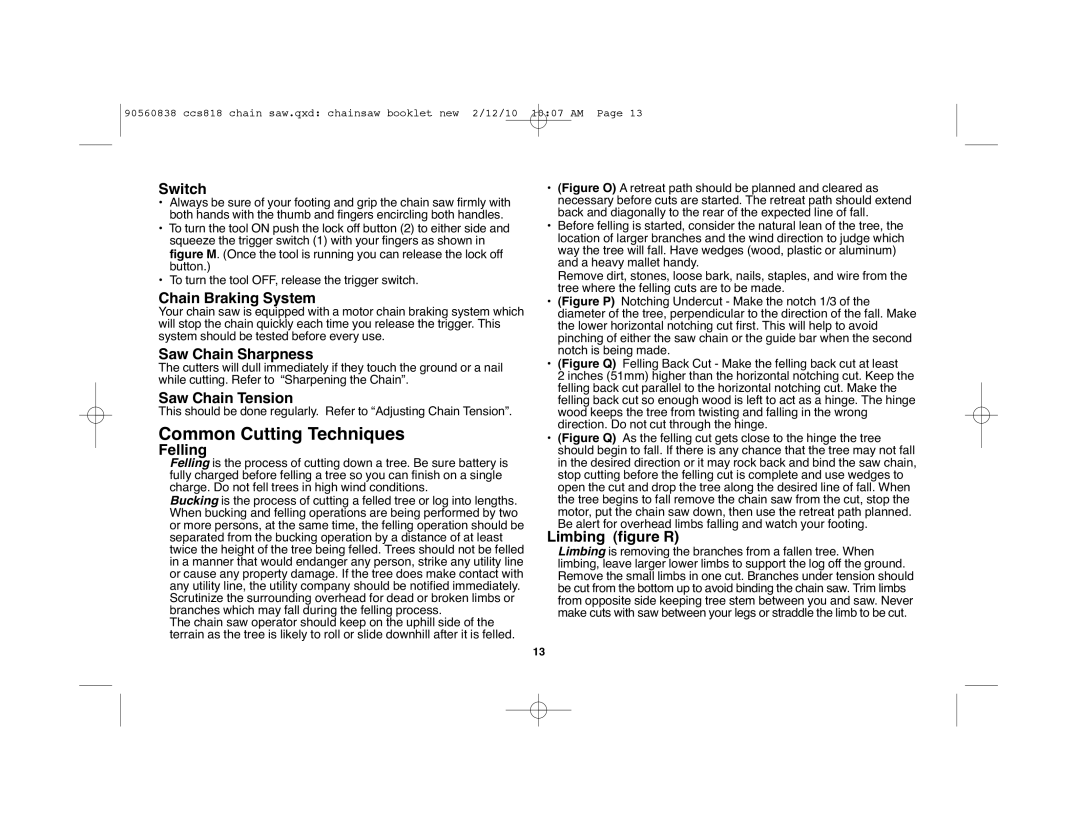CCS818, CCS818R specifications
The Black & Decker CCS818 and CCS818R are innovative cordless electric saws designed for both professional and home use. These lightweight chainsaws are powered by an 18-volt lithium-ion battery, providing the freedom of movement without the constraints of a cord, making them perfect for a variety of cutting tasks in the garden or around the property.One of the key features of the CCS818 and CCS818R is their 8-inch cutting bar, which allows for efficient cutting of limbs and small trees while ensuring portability and ease of use. Despite their compact size, these saws are capable of cutting through material with confidence, thanks to their robust chain system that grips and cuts smoothly through wood.
In terms of technology, the CCS818 models integrate an automatic oiling system to ensure the chain operates smoothly while reducing wear and tear. This feature simplifies maintenance, allowing users to focus on the task at hand rather than worrying about manual lubrication. Additionally, a transparent oil tank provides a quick view of oil levels, helping users monitor and maintain optimal performance.
The ergonomic design of the CCS818 and CCS818R further enhances their usability. The saws are equipped with a wraparound handle, providing a secure and comfortable grip, which reduces hand fatigue during extended use. The lightweight design also makes these saws user-friendly, especially for those who may not have prior experience handling a chainsaw.
Another characteristic worth mentioning is the tool-free chain tensioning system. This feature allows users to make chain adjustments quickly and easily without the need for additional tools, thus improving workflow efficiency. The CCS818 and CCS818R are also designed with safety in mind, equipped with a chain brake that helps prevent accidents and ensures safe operation.
In summary, the Black & Decker CCS818 and CCS818R chainsaws provide a perfect blend of power and convenience for anyone in need of a reliable cutting tool. Their lightweight design, lithium-ion battery power, automatic oiling, and ease of use make them standout choices for gardening enthusiasts and professionals alike. Whether trimming branches or tackling small tree removals, these chainsaws offer the performance and versatility needed to get the job done efficiently and safely.

